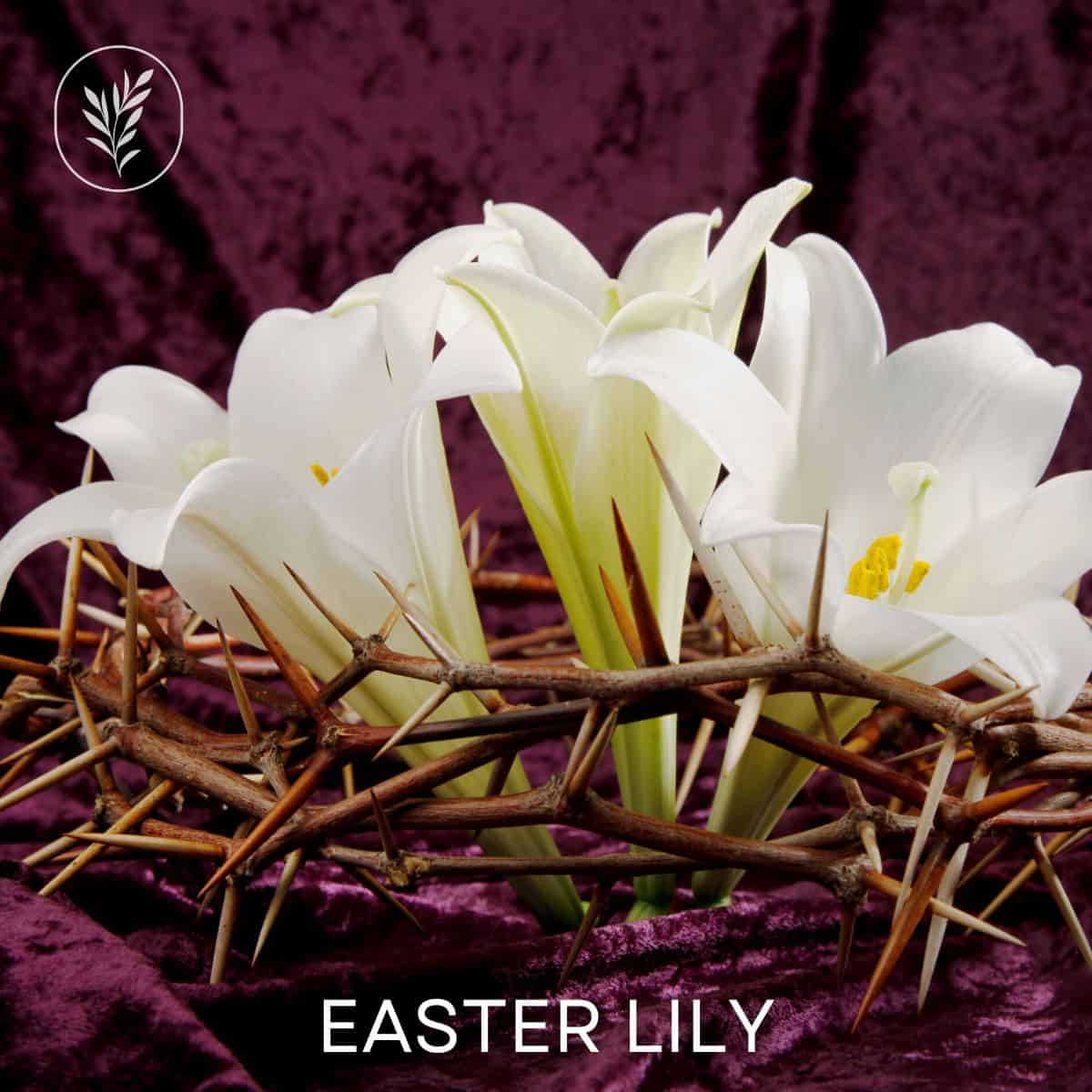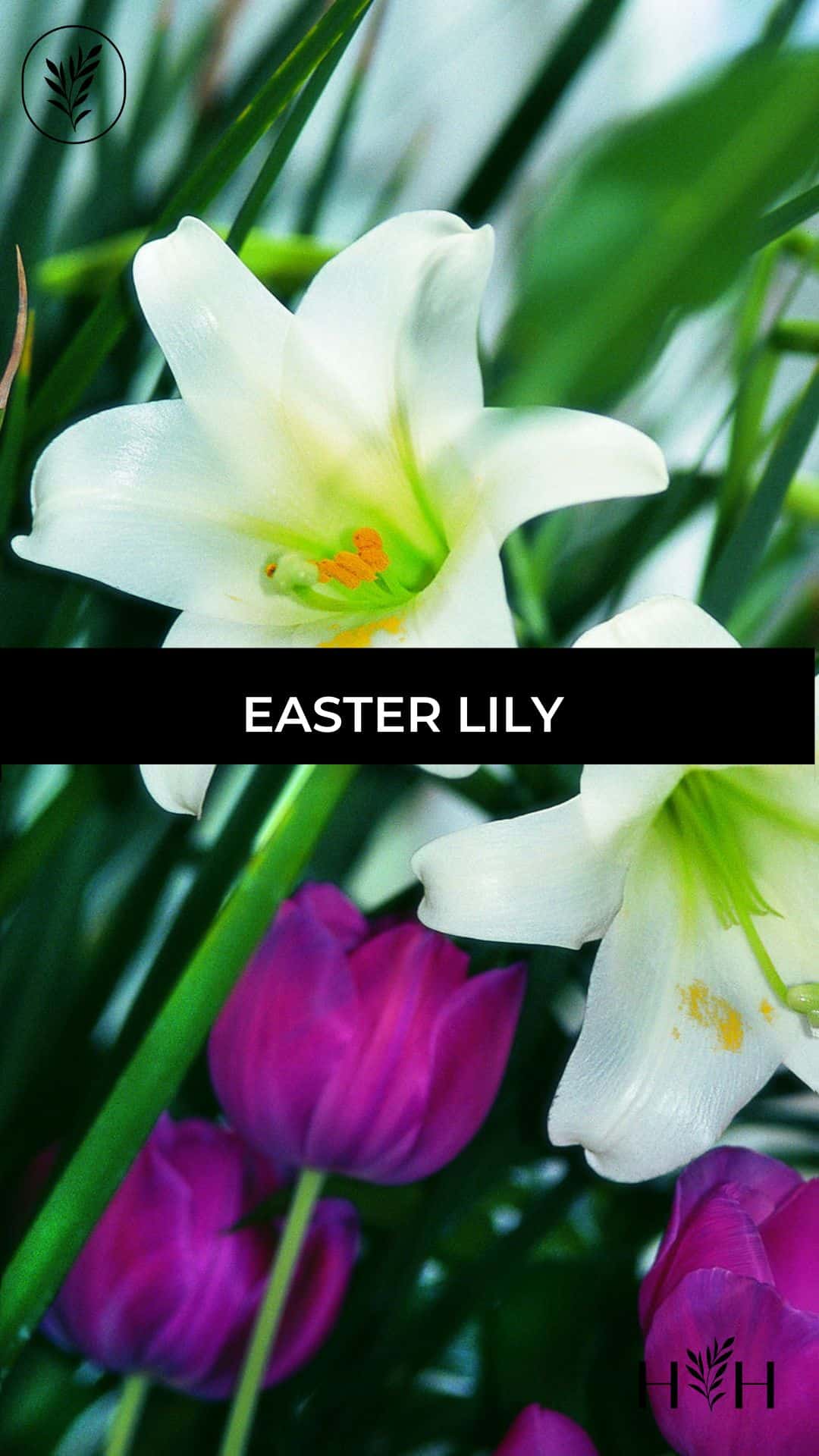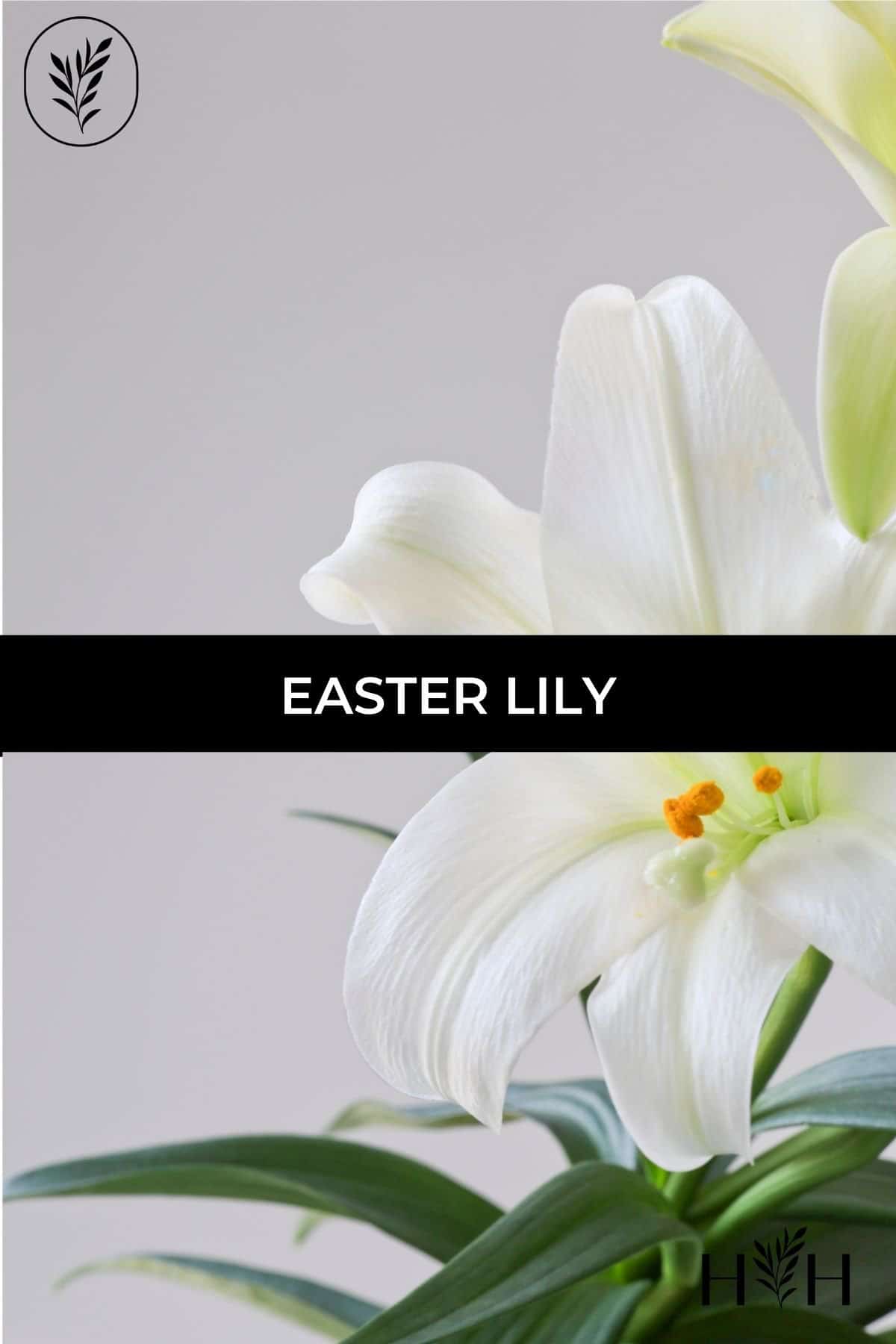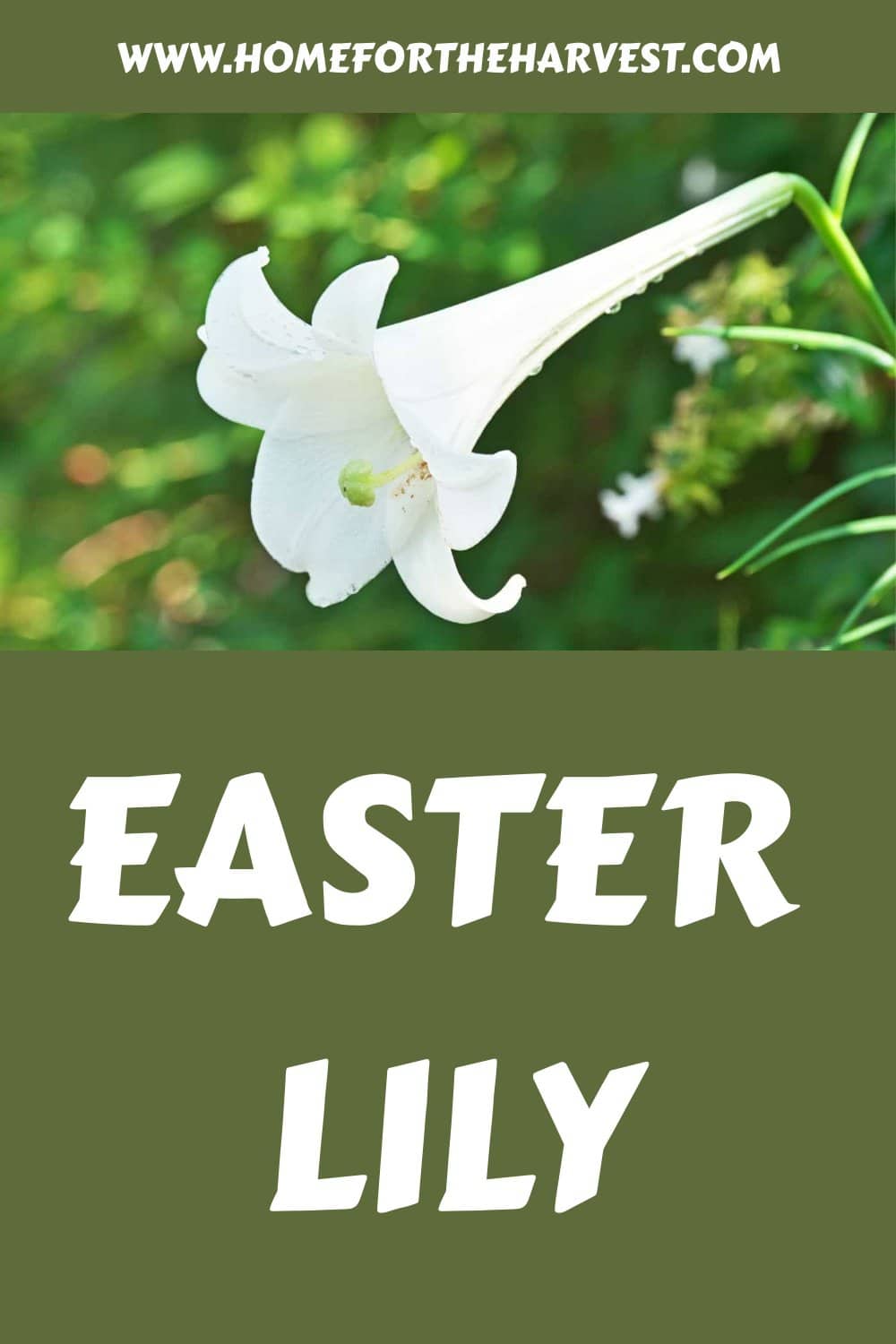Interested in growing the gorgeous Easter lily? These beautiful white flowers are a popular choice for spring gardens and make an ideal addition to any yard. With the right care and conditions, you can enjoy these blooms year after year!
Easter lily (Lilium longiflorum) is a perennial flowering plant known for its graceful white flowers. The flower is cultivated to bloom around Easter and is popular at church services and for decorating holiday meals. Easter lilies can be grown outdoors as perennials in Zones 3-8 and may be grown as annuals in Zones 8-10 if desired. The plants prefer well-drained soil and a full sun planting location.
Introduction to the Easter lily
Easter lilies (Lilium longiflorum), commonly associated with the Easter holiday, are known for their large, white trumpet-shaped flowers. They also have a strong, sweet fragrance. They are typically used as cut flowers or sold as small potted centerpiece plants, but they can also be grown in gardens.
The Easter lily is native to Japan, Taiwan, and the Philippines and can be grown in many other areas as an annual or a perennial, depending on the climate. Like other lilies, Easter lilies are toxic to cats.
The stately flowers typically bloom in late spring or early summer when planted outdoors and have white, trumpet-shaped blossoms that sit atop tall, sturdy stems. Potted Easter lilies are cultivated in a greenhouse so that they bloom early – generally in time for the Easter holiday weekend.
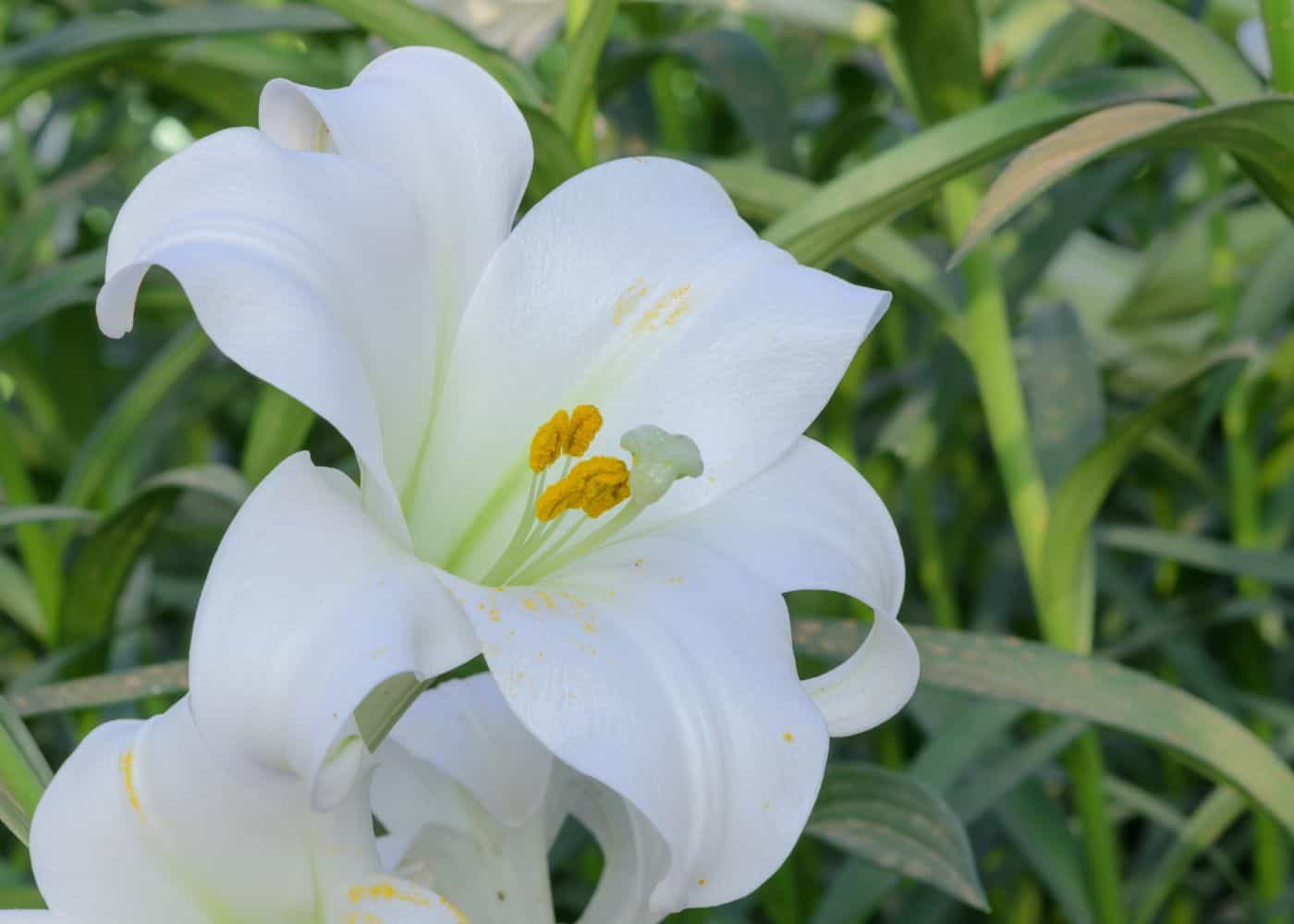
Growing Easter lilies at home
We can cultivate Easter lilies as a permanent feature of a perennial garden or seasonally in potted arrangements over the Easter holiday. Plants growing out in the garden soil generally require lower maintenance than potted plants. Easter lily (Lilium longiflorum) plants are easiest to grow as perennials in Zones 3-8. These cold-hardy bulbs can be left in the soil year-round to sprout and flower anew each spring.
While you can purchase bulbs, these plants are most commonly sold as potted plants in bloom around Easter. In areas with cool winters, the plants can generally be transplanted out into the outdoor garden. The plant may not bloom well the following spring, but usually will start blooming again within 2 years of planting. Rather than blooming at Easter, however, the plant will revert to its natural early-midsummer blooming time.
Easter lily’s cultural significance
Easter lily (Lilium longiflorum) is popularly used in church services and decorating holiday meals. Easter lilies symbolize the resurrection of Christ. White lilies, in general, symbolize purity, rebirth, hope, and a fresh start. Lilies also can be used to symbolize motherhood.
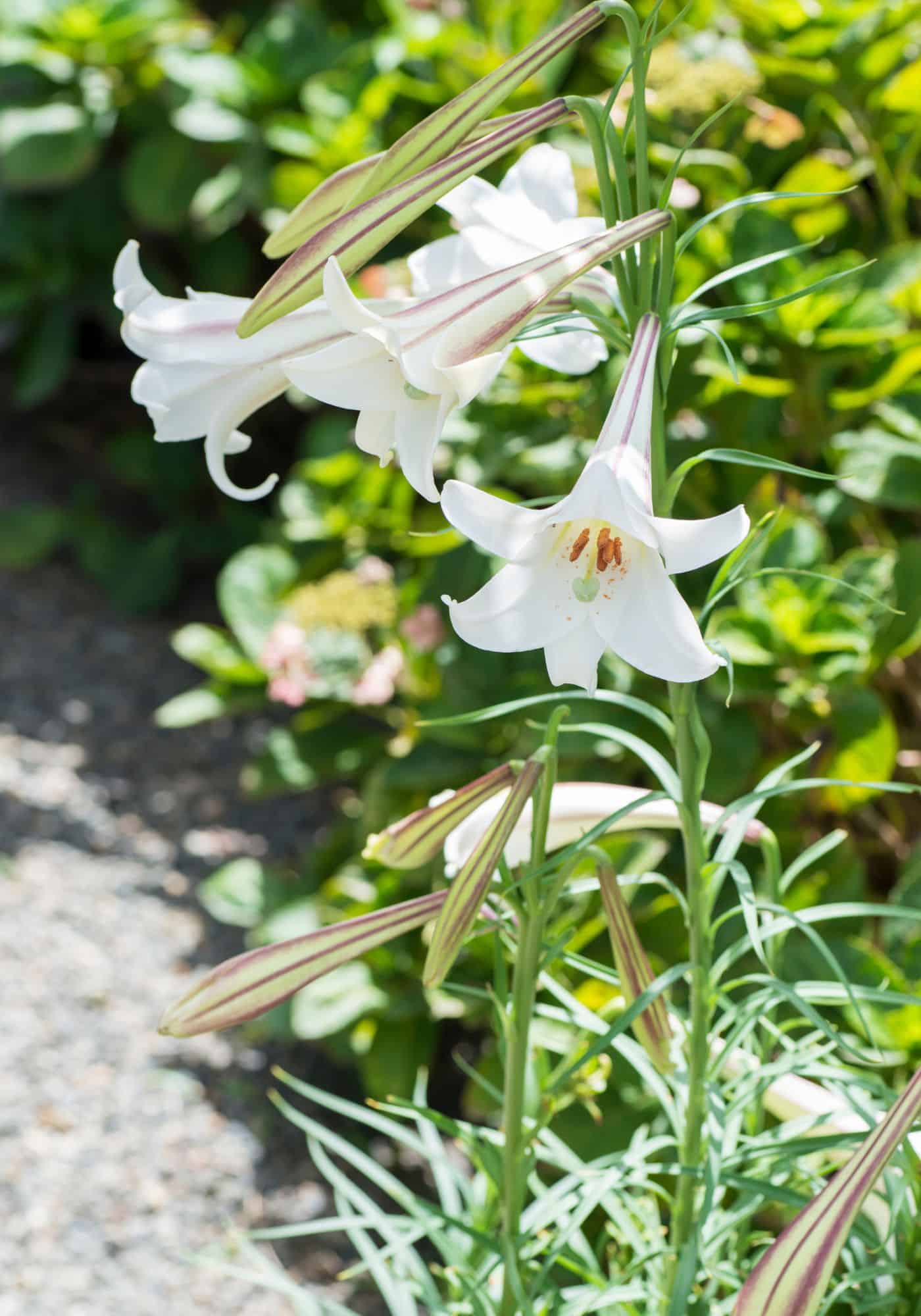
Planting Easter lilies
Lilies are generally planted either from dormant flower bulbs or from small potted plants from the garden center. If planting from bulbs, it’s best to do so in the fall. That said, sometimes, they are only available locally in the spring. The bulbs should be planted 3-4 inches deep and 6-9 inches apart.
If you are planting potted Easter lilies, the plants can be moved out into the garden when all danger of frost has passed in the spring. The plants sold in bloom around Easter have been cultivated in a greenhouse specifically to bloom at that time. If the flowers were grown outdoors, they usually wouldn’t bloom until early or mid-summer. So even though your plant is behaving like its warm outside, you need to wait until its not too cold out there before moving it out, as its not used to the cold.
The Easter lily should be planted in well-drained soil, with full sun exposure and a slightly acidic pH between 6.0 and 7.0. That said, they are tolerant of less-than-perfect soil and are worth planting and testing out. The bulbs should have access to a steady supply of water but avoid letting them sit in puddles of water as this can cause bulb rot.
Growing Easter lilies in the outdoor garden
Water the Easter lily as needed to keep the soil evenly moist but not soggy. The easter lily enjoys a regular feeding schedule, so fertilize with a balanced fertilizer or compost tea every month during the growing season.
If you’ve just put lily bulbs in the ground, don’t anticipate a floral gift for the holiday season this year. Lilies can take up to two years before they blossom after being planted.
As your Easter lilies begin to mature and grow tall, supporting them in the garden may become necessary to keep them standing upright. Use a bamboo stake and tie the flower stalk gently at 6-12 inch intervals. Use soft twine or fabric rather than plastic or wire ties.
When the Easter lily completes its blooming cycle, allow it to die back naturally in the late summer and early fall. The foliage should turn yellow and die off when the plant is done blooming. This is a signal to stop watering as well.
Once the foliage has died back, cut it down to the ground but leave the roots in place. These perennial bulbs will sprout new growth and flower again after a dormant period in winter.
Growing potted Easter lilies indoors
Place your indoor lilies near a window where they can enjoy bright, indirect sunlight. To ensure their survival, make sure to shield them from cold gusts and sources of heat such as vents, fireplaces, or any other appliances.
If your pot is adorned with decorative foil (which often happens for plants purchased around Easter), be sure to remove it before watering to ensure the pot drains completely. Be careful not to overwater, as too much water can prove fatal over time. Let all the extra water drain into the sink and then place the pot on a saucer.
To extend the bloom of your flower and avoid staining its white petals with pollen, carefully snip away the anthers from its center. This is not strictly necessary but can help keep your petals pristine if you need the flowers for an event.
When selecting the ideal setting for your flower, make sure it’s somewhere that has bright, indirect light and a temperature between 60°-70°F (15°-21°C). You can supplement with an artificial plant light if the plant will be indoors for a long time.
While its fragrance can sometimes be too overpowering for indoor environments, you can easily move the plant outside once nighttime temperatures exceed about 50°F (10°C). Planting it into your garden is a nice option for gardeners living in Zones 3-8.
Water the plant whenever the top two inches of soil are dry. Remove dead flowers as they fade to encourage the plant to produce more blooms.
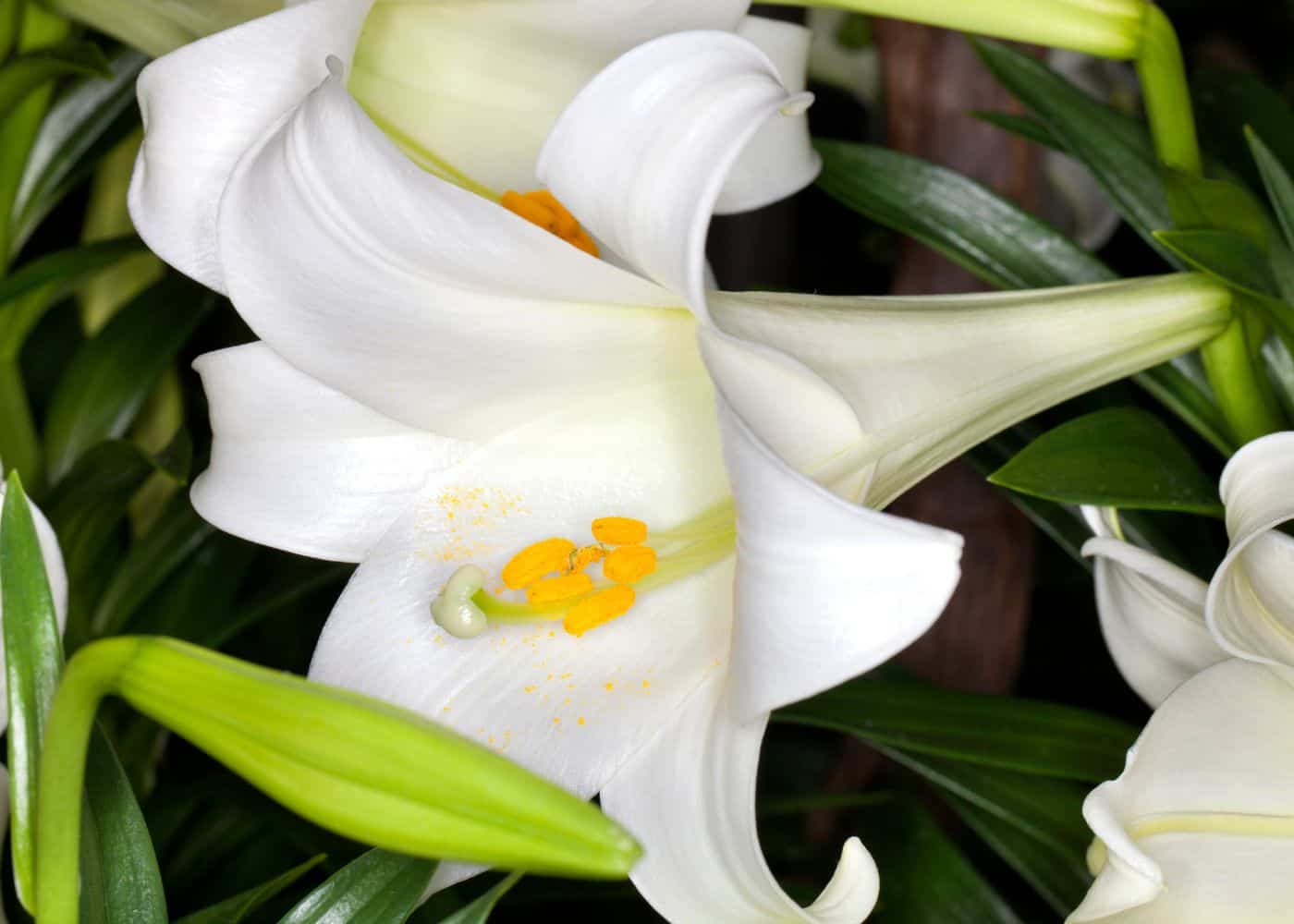
Harvesting Easter lilies
When the Easter lily blooms, cut the flowers for use in floral arrangements. Cut them just as they open and place in a vase with an inch of warm water to keep them fresh for several days.
Easter lily varieties
Here are some popular cultivars of Easter lily (Lilium longiflorum):
- ‘Nellie White’ (common at Easter floral sales)
- ‘White Heaven’ (classic white petals)
- ‘Miracle’ (dwarf plants)
- ‘Deliana’ (cream-lime petals)
- ‘Triumphator’ (white and pink petals)
- ‘Magnifique’ (blush pink petals)
- ‘Elegant Lady’ (pink petals)
- ‘Purple Marble’ (rich purple petals)
Dividing Easter lilies
One of the best ways to ensure that your Easter lily plants continue to thrive is by dividing them periodically. Dividing the plants allows you to control their size, rejuvenate older clumps, and promote the growth of new flowers.
Here’s a step-by-step guide on how to divide Easter lily plants in your garden:
- Choose the right time of year. The best time to divide Easter lilies is in the fall, after the leaves have turned yellow and the flowers have finished blooming. This allows the plants to establish themselves before the winter weather sets in.
- Dig up the clumps of bulbs. Using a garden fork or spade, carefully dig up the clumps of Easter lily bulbs from the ground. Be sure to dig at least 6 inches away from the base of the plants to avoid damaging the bulbs.
- Separate the bulbs. Once you’ve removed the clumps from the ground, gently separate the individual bulbs from the clumps. You can use your hands or a sharp knife to do this.
- Replant the bulbs. Choose a location that offers well-drained soil and a spot where the plants will receive at least six hours of direct sunlight per day. Plant the bulbs about 3-4 inches deep and 2-3 inches apart.
- Water and fertilize the bulbs. After replanting the bulbs, water them well to help them establish roots. You can also apply a balanced fertilizer to give them a boost of nutrients.
- Be patient. It will take some time for the plants to become established again, and you may not see any flowers for the first season or two. But with proper care, your Easter lily plants will soon be back to their full glory.
It’s important to note that Easter lily bulbs should be planted in soil that is well-draining and not soggy. The bulbs should also be planted at a depth of about 3-4 inches, with the tips of the bulbs pointing up.
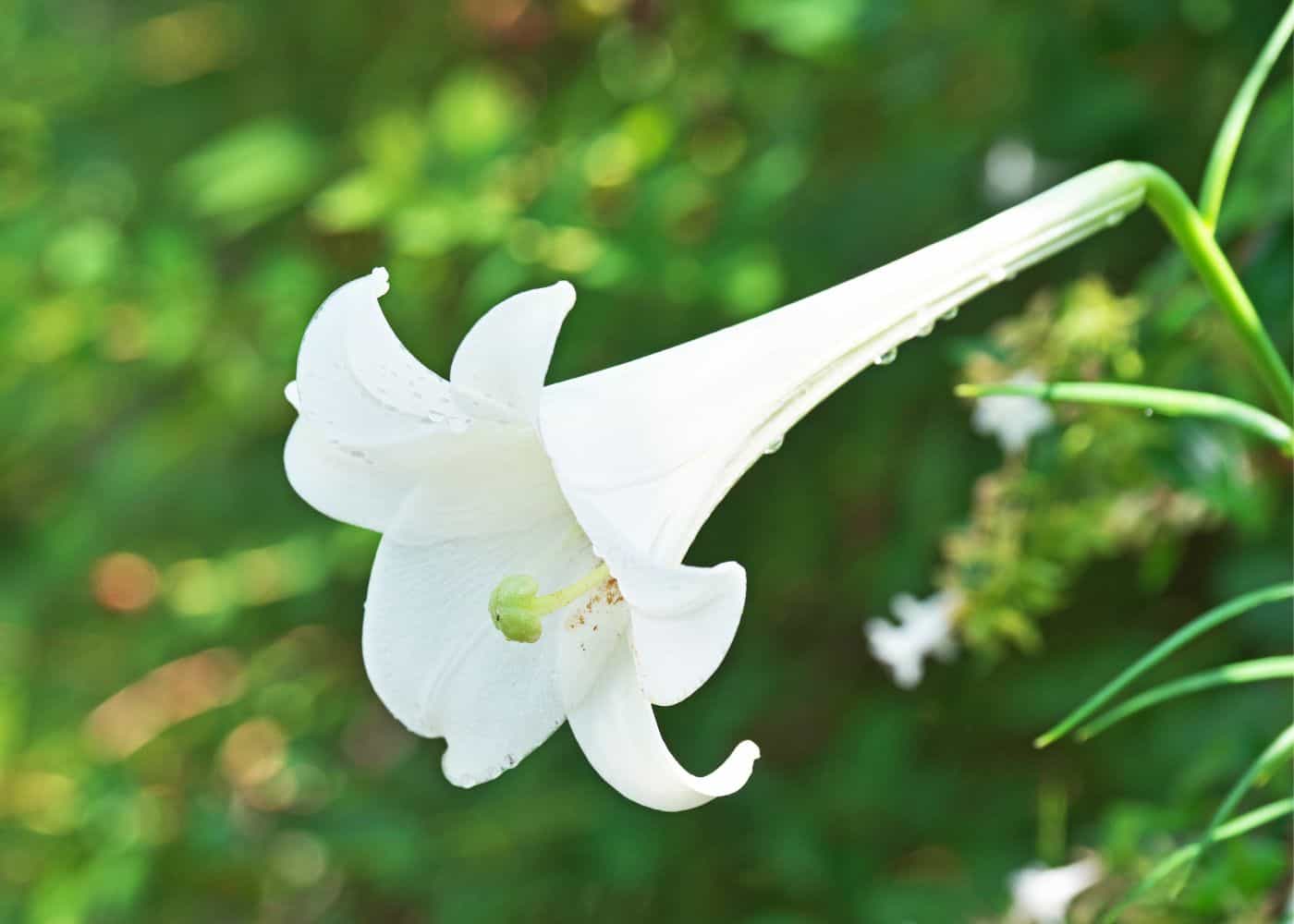
FAQs about Easter lily plants
What are Easter lily plants?
Easter lily (botanical Latin: Lilium longiflorum) is a type of lily plant that is commonly associated with the Easter holiday. This species is known for its large, white trumpet-shaped flowers, which have a strong, sweet fragrance. They are typically used as cut flowers but can also be grown in pots or in outdoor gardens.
When do Easter lily plants bloom?
Potted Easter lily plants are usually cultivated in greenhouses so that they bloom around the Easter holiday. When these plants are transplanted into the ground outdoors and experience natural conditions, they tend to bloom in early to mid-summer.
How do I care for Easter lily plants?
Caring for Easter lily plants is relatively easy. They prefer well-drained soil and a spot in the garden that gets plenty of sun. They also need to be watered regularly, but the soil should not be constantly wet. Once the flowers have bloomed, you can deadhead the plant and fertilize it to encourage more blooms.
Are there any other varieties of lilies similar to Easter lilies?
Yes, there are several other types of lilies that are similar to Easter lilies. Some examples include:
-Trumpet lilies: These lilies have large trumpet-shaped flowers that are similar in shape to Easter lilies but come in a range of colors
-Oriental lilies: These lilies have large, fragrant flowers and are also similar in shape to Easter lilies but come in a range of colors, mostly pinks, yellows and whites. The variety ‘Casablanca’ is one of the best white lilies.
-Asiatic Lilies: These have star-shaped flowers, come in a variety of colors, some have spots or speckles on the petals but are more tolerant to a wide range of climates and conditions.


